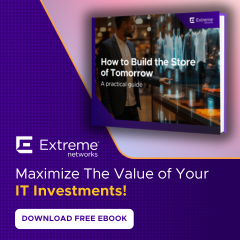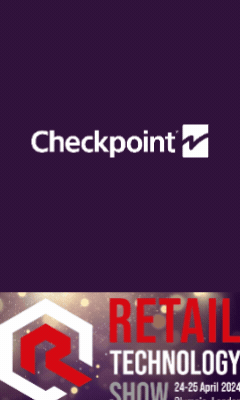Q&A: Magnus Larsson, CEO, Pricer
Pricer is a leading supplier of shelf edge automation and communication solutions based on electronic shelf labels (ESL) that help retailers digitalise their stores in order to solve key bricks-and-mortar challenges to meet the new and emerging needs of shoppers.
From improved store operations and task management, to more efficient replenishment, stock availability, and ecommerce fulfilment from stores, as well as enhanced customer engagement and retail media network capabilities, it is making the shelf-edge work harder, from pricing to picking and promotions, for retailers. Having deployed 280m ESLs in over 22,000 stores globally, Pricer works with some of the world’s largest retailers.
Magnus, what is your background?
After obtaining my engineering degree from KTH Royal Institute of Technology in Stockholm in Sweden, I have had held numerous senior positions – globally and regionally – at international companies within sales and managed services.
Cutting my teeth in the telecom industry at international companies such as Nokia, Sonera and Edgeware, I moved to retail technology almost five years ago, joining Pricer as VP of Customer Operations before I took the helm as President and CEO almost a year ago.
What are some of the challenges retailers are facing in the current economic climate?
There are many of them and many are unprecedented, so it is hard for retailers to know where to start and how to measure the changes they make. Many perhaps over-responded during the pandemic because they are good people and care about their customers, but now the cost of meeting challenges must be affordable and the results effective. Consumer behaviour has changed so dramatically that retailers need first to understand them better and then respond based on that insight.
How does Pricer plan to address and solve these challenges for retailers?
What we do know, because we undertook research recently, is that real-time price comparisons top shoppers’ demands for improving customer experience (CX) at the shelf-edge – and this is mattering more in the context of ongoing cost-of-living pressures. We polled 1,000 UK shoppers who said that real-time visibility of prices delivered at the shelf-edge was the top driver of in-store CX for 39%. A third (33%) said they now wanted real-time visibility of deals and promotions delivered at the shelf-edge, while a further 30% wanted digital labels to give them live alerts on price drops, to help them get the best deal and help their budgets go further.
This is why our shelf-edge solutions highlight price, promotion and product information because it is at the shelf that the decision to buy, substitute or leave the store is made. And consumers are more likely to abandon their basket if they are not happy because they always have a choice.
How do these solutions help retailers and brands operating in the retail sector?
Consumers in the middle of a cost-of-living crisis are taking more time to seek out the best prices, which may be the lowest price or the one that best reflects the quality of the product, so they expect to see more information than they did in the past.
And with a fragmentation of diet types, based on health and lifestyles, this also means they want access to more product information. Quite simply, electronic labels can display information most relevant at any moment in time and yet be changed universally and on the instant, something paper labels simply cannot do.
How are retailers using your systems to gain competitive advantage?
Our customers operate in one of the most competitive grocery markets in Europe, which means that claims in the media that they are profiteering from high inflation are nonsense. UK consumers pay some of the lowest prices in Europe and have plenty of choice.
What this means for retailers is that they have to not only offer good prices but also ensure a positive price perception – or value perception – on every single item. And they have to be able to communicate this clearly and simply at the shelf edge. Our technology enables them to do this.
What challenges and opportunities do you see in retail for 2023?
It was recently announced that the UK continues to experience higher inflation than almost anywhere else in Europe, so, while it is now predicted that food price inflation will start to fall, it is still very high.
And as the cost-of-living crisis threatens to deepen as other costs, notably mortgages, rise, we can confidently predict that retailers will struggle to manage their own rising costs and still offer their customers good prices.
Clarity of communications in store will be part of helping them to sell this message in a positive way, whilst avoiding a race to the bottom.
How will you address these challenges and turn them into successes?
I think the first answer for us as a supplier is to be honest about the challenges and not try to suggest they can be solved immediately.
The key, which is of course a much harder sell, is to show how our solutions provide value not just immediately but over the long term, and are built to adapt to what is to come rather than becoming obsolete quickly. In Forrester’s Total Economic Impact™ on Pricer ESLs for example, our solutions were found to have a payback period of 18 months, and a five year ROI of 277%.
There are plenty of cheap ‘solutions’ out there that have been adopted but which retailers are having to strip out within a couple of years. Three problems with these products are 1) that they use a network technology that cannot do universal, instant price changes; 2) that they cannot manage more than a couple of thousand SKUs; and 3) that they have a very short battery life, meaning every label needs replacing within a few years.
What’s special about the platform and your approach?
Our platform was built to enable retailers to enjoy the benefits of in-store automation progressively so they can adopt at their own pace, seeing the results and then moving on. A platform approach also means that retailers do not have to keep adding new technology for every single solution. For instance, they can add flash technology that enables them to identify shelf gaps instantly, something that cuts down replenishment times, critical as staff wages rise and finding people becomes harder and harder.
This same flash technology can then be used to support staff that are picking for online orders, enabling them to pick at least five times faster than without the solution. Going further, the same store network that runs shelf labels and flash can incorporate content for digital signage, which retailers are starting to embrace as part of their Retail Media strategies, and sees them using their store assets to advertise on behalf of third party brands to generate new revenue, as well as make the store an even more attractive place for customers.
To find out how Pricer can help your retail operation, visit them online here or connect here.














